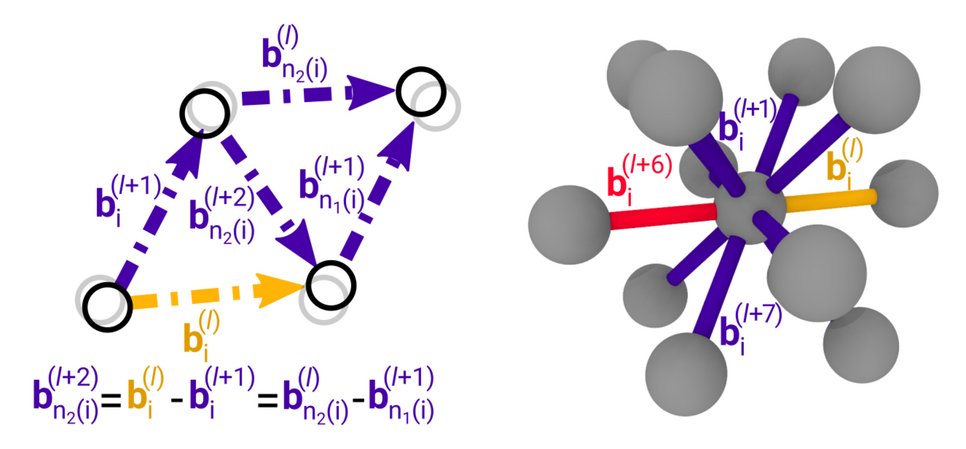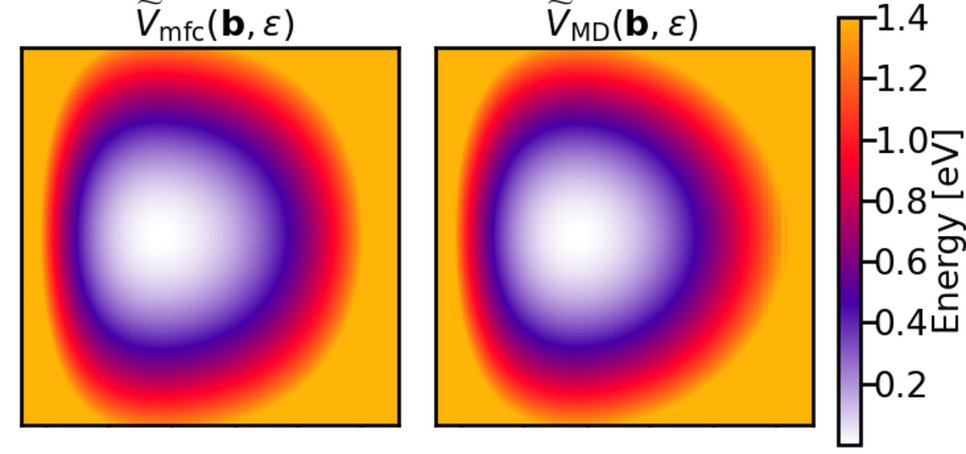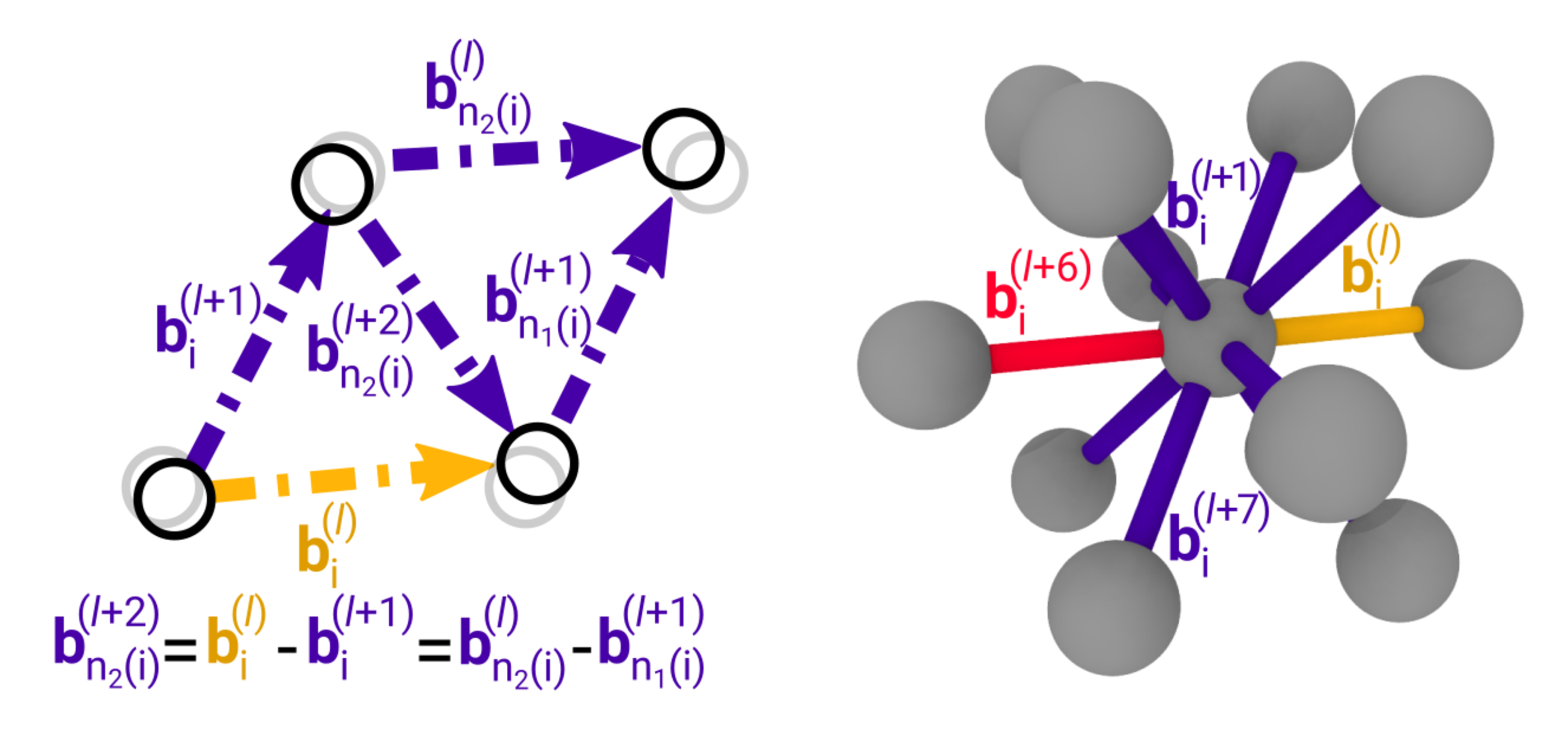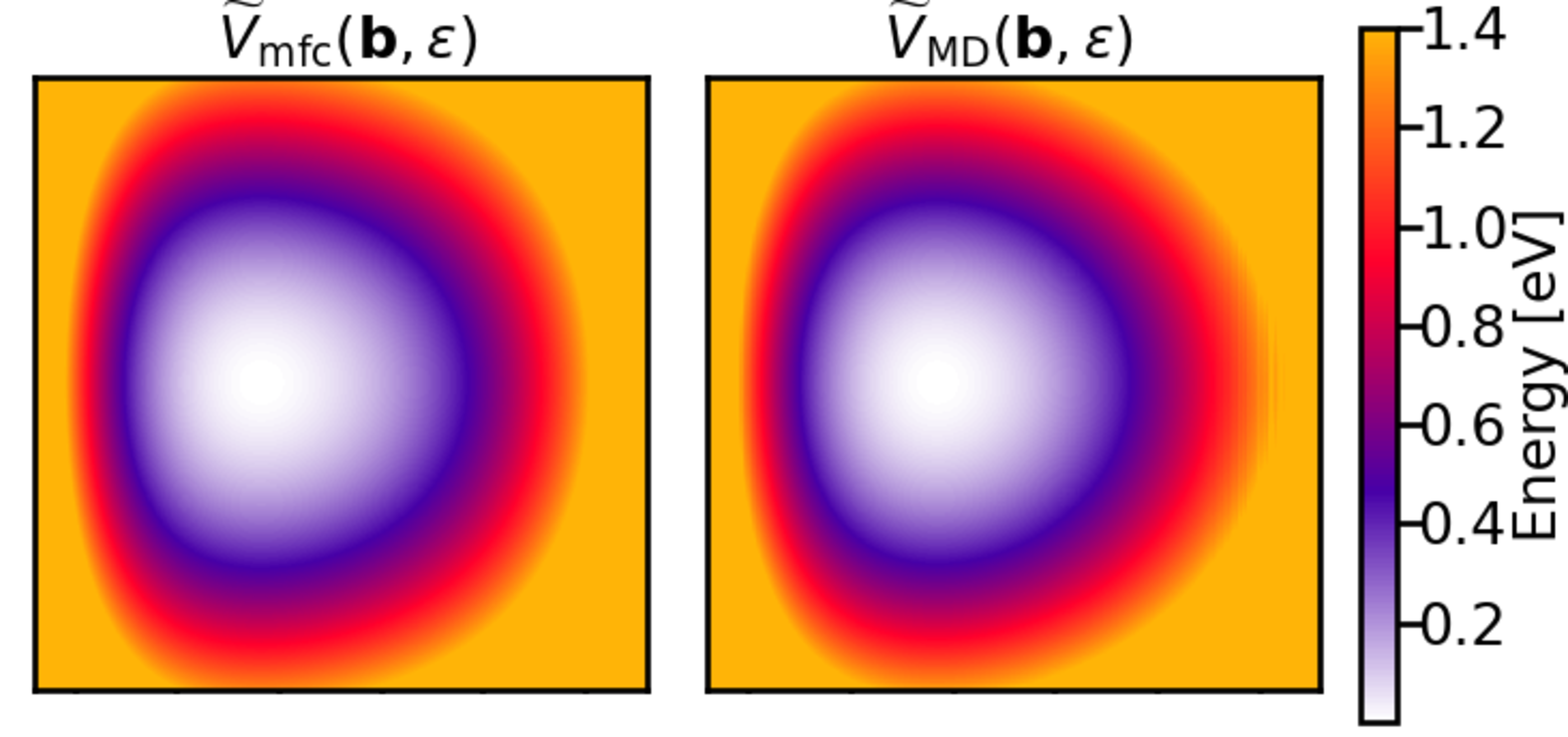Mean Field Potentials for Anharmonic Behaviour
The evaluation of anharmonic free energies of material phases is vital for the generation of thermodynamic phase diagrams. This project explores the concept of obtaining these free energies analytically from a bond lattice mean field model. The advantage of such an approach is that the computational cost is negligible compared to the traditional approach of thermodynamic integration.
The free energy of a system, among other important material properties, is temperature dependent. Unlike at T=0 K, where only a single minimized configuration is sufficient, at finite temperatures, thermodynamic ensemble averages consisting of millions of individual configurations are required to accurately compute free energies. Directly computing such a large ensemble with ab initio calculations is impractically expensive, so approximation methods such as the harmonic approximation and its variant the quasi-harmonic approximation (QHA) -- which takes volume expansion into account -- are regularly used. These methods provide an analytical expression for the free energy, which makes them quick and easy to construct and use. However, as the QHA does not capture implicit anharmonicity, it may fail -- and may even give qualitatively wrong thermodynamic trends.

To capture anharmonicity while still maintaining computational efficiency, in this project we explore the concept of anharmonic mean field modelling. We construct our model by using a lattice of bonds (bond lattice) instead of atoms. Just as with equivalent atoms, equivalent bonds in a bond lattice are connected by symmetries. By knowing a single bond, its bonding potential (e.g., Morse, harmonic etc.), and the symmetry operations that connect it to all the other equivalent bonds, we can build an analytical mean field model. The bonds, however, are also correlated. By analyzing and taking into account the correlations between the different bonds of a crystal structure from MD simulations, we can build a correlated mean field model.

Our preliminary studies using this bond lattice mean field model for the FCC crystal structure have shown meV/atom accuracy when compared against the full anharmonic ab initio free energy from thermodynamic integration, but with significant reduction in computational cost. This shows that the model can be used as a highly efficient and accurate surrogate model for computing anharmonic thermodynamic properties.
Our current research is focused on generalizing the approach to other crystal structures and bonding potential types and the analysis of correlations between different bonds. Further work will be focussed on alloys and structures with point defects which contain multiple inequivalent bonds.

